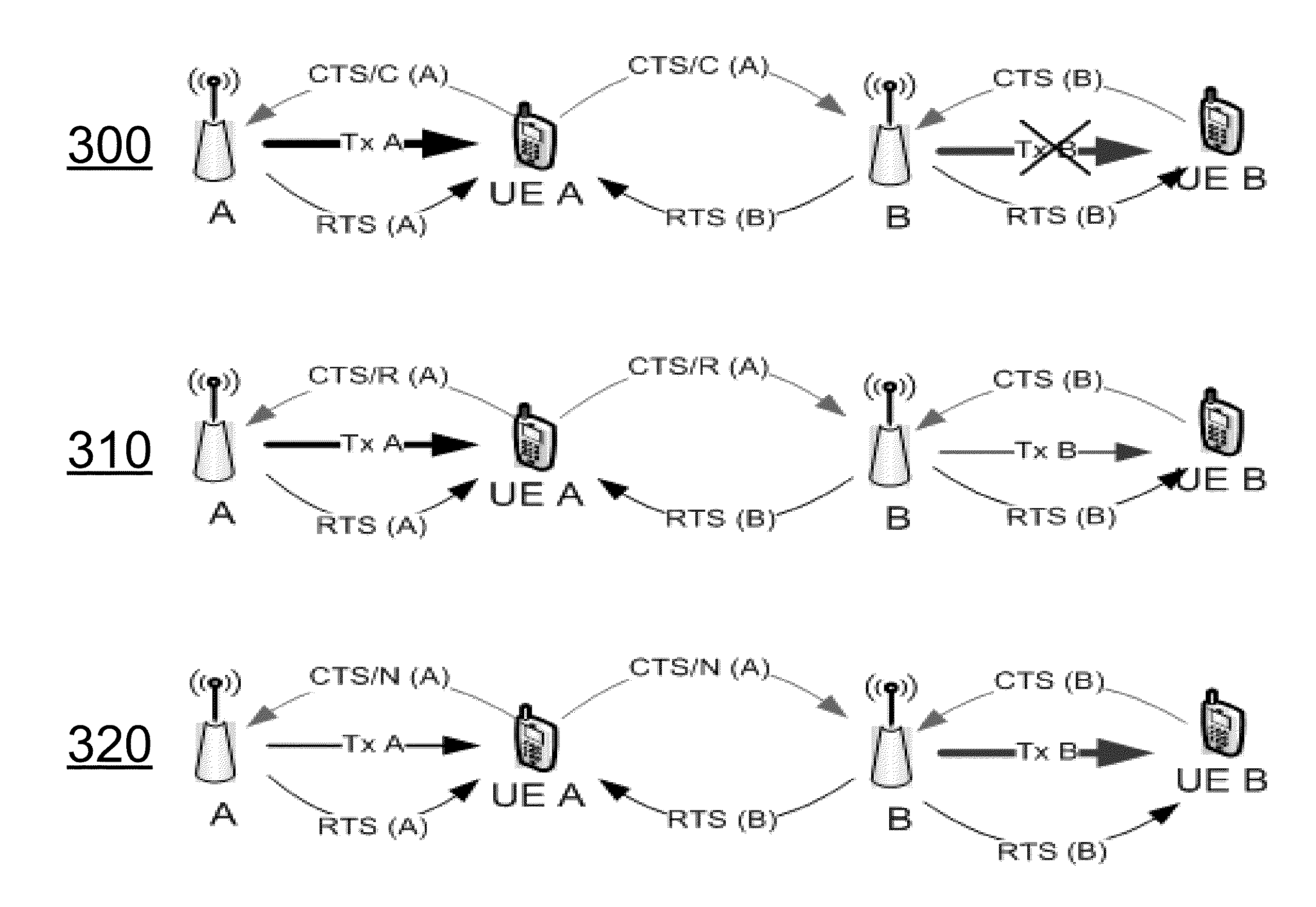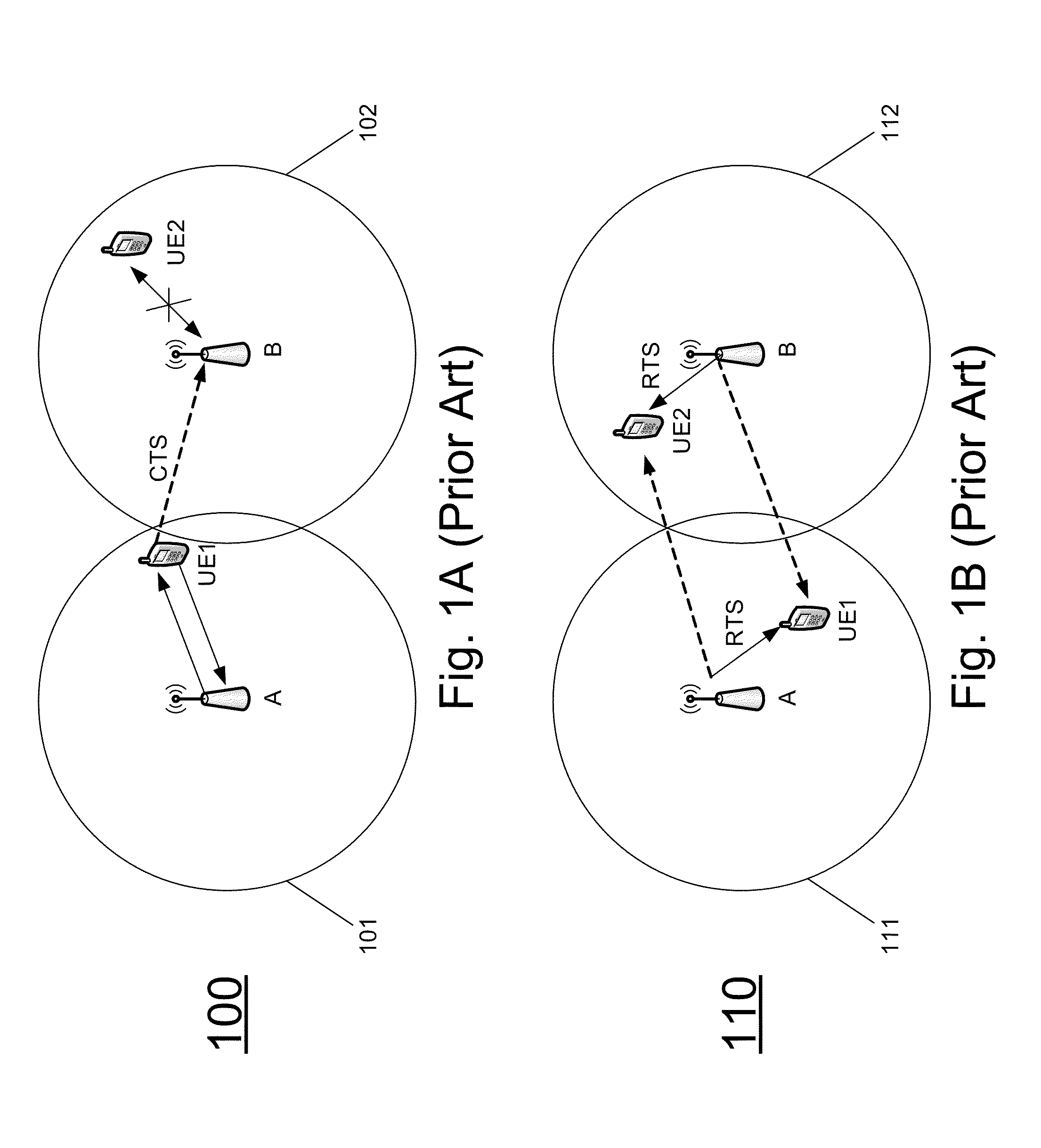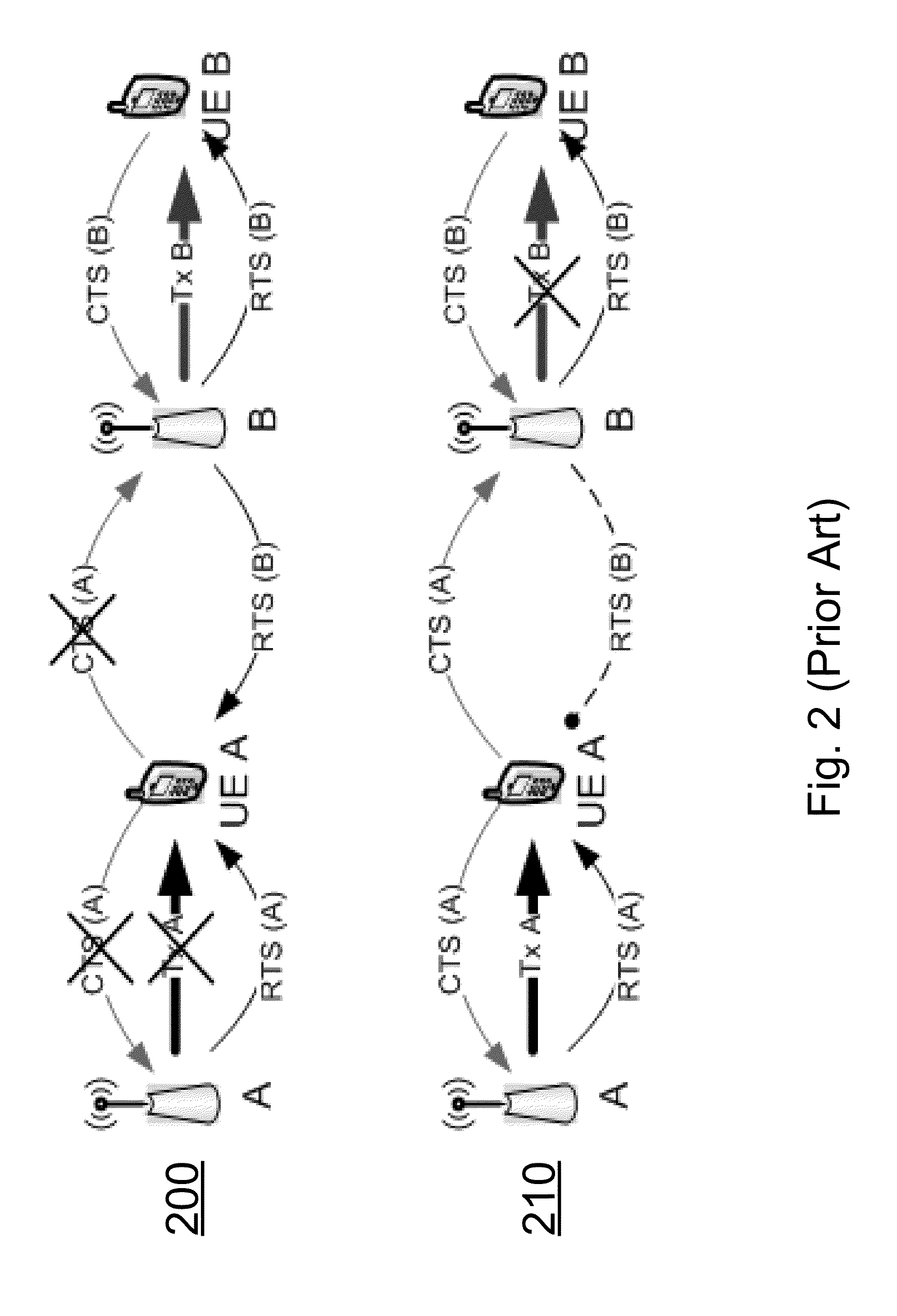Protocol with improved spatial reuse
a technology of spatial reuse and protocol, applied in the field of communication systems, can solve the problems of high interference in data packet transmission, increased likelihood of data packet transmission collision, and uncoordinated deploymen
- Summary
- Abstract
- Description
- Claims
- Application Information
AI Technical Summary
Benefits of technology
Problems solved by technology
Method used
Image
Examples
second embodiment
[0143]In the second embodiment, the CTS channel where CTS packets intended for receivers in the cell can be cell-specific. In this embodiment, there can be physical layer collisions between transmissions from the cell of the receiver, and transmissions form other cells. In this embodiment, the cells transmitting restrictions or clearings can identify themselves.
third embodiment
[0144]In the third embodiment, there can be a cell-specific CTS channel for transmitting the parts of the CTS packets that are relevant for the transmitter in the cell of the receiver, such as CQI, and a cell-specific CTS channel for which transmitters from other cells may transmit clearing and restricting packets. On the latter, there can be physical collisions. The cells transmitting restrictions or clearing packets can identify themselves. One possible solution for collisions can be that a collision is observed as an incoming CTS channel with transmission power, but incoherent bits would be interpreted as a CTS / C packet.
[0145]In an embodiment, if the RTS / CTS packets are used in a framed system, where there is a semi-static or fixed slot structure, where some slots are intended for UL traffic, and some slots are intended for DL traffic, the RTS packet for a future DL slot can be embedded into a DL slot, such as a specific OFDM symbol of a DL slot. Likewise, the corresponding CTS p...
PUM
 Login to View More
Login to View More Abstract
Description
Claims
Application Information
 Login to View More
Login to View More - R&D
- Intellectual Property
- Life Sciences
- Materials
- Tech Scout
- Unparalleled Data Quality
- Higher Quality Content
- 60% Fewer Hallucinations
Browse by: Latest US Patents, China's latest patents, Technical Efficacy Thesaurus, Application Domain, Technology Topic, Popular Technical Reports.
© 2025 PatSnap. All rights reserved.Legal|Privacy policy|Modern Slavery Act Transparency Statement|Sitemap|About US| Contact US: help@patsnap.com



